





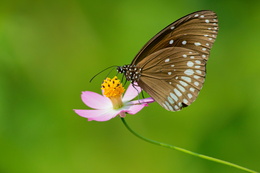 For those who have spare land, nothing can be more fascinating than starting a flower garden and incorporating vibrant blooms in it. But, what if you get to enjoy beautiful butterflies fluffing their wings in your garden? If the idea of watching butterflies sounds fascinating, you can surely encourage these winged insects to visit your yard by selecting specific flowering plants. You will come across many flowers that attract butterflies, from which you can choose the ones that interest you the most.
For those who have spare land, nothing can be more fascinating than starting a flower garden and incorporating vibrant blooms in it. But, what if you get to enjoy beautiful butterflies fluffing their wings in your garden? If the idea of watching butterflies sounds fascinating, you can surely encourage these winged insects to visit your yard by selecting specific flowering plants. You will come across many flowers that attract butterflies, from which you can choose the ones that interest you the most.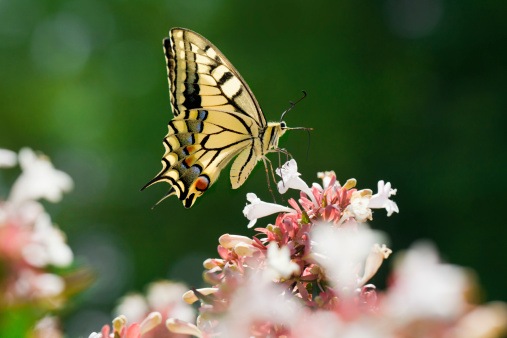 One of the integral flowers for butterfly garden is none other than the glossy Abelia (Abelia grandiflora). It is a hybrid cultivar, developed by crossing A. uniflora and A. chinensis. Basically a shrub, this flowering plant attracts hummingbirds too. The leaves are deciduous and turn reddish-brown in fall. In spring, small, fragrant, tubular-shaped flowers of pink and white are borne in clusters.
Asclepias
If you don't have a green thumb, and are looking for low-maintenance flowers that attract butterflies, the Asclepias tuberosa is an excellent choice. In fact, it is known as butterfly flower and butterfly weed, owing to its attraction to butterflies. Different types of butterflies visit this orange flower, especially the Monarch butterfly, pearl crescent, cabbage white, and Eastern tiger swallowtail.
One of the integral flowers for butterfly garden is none other than the glossy Abelia (Abelia grandiflora). It is a hybrid cultivar, developed by crossing A. uniflora and A. chinensis. Basically a shrub, this flowering plant attracts hummingbirds too. The leaves are deciduous and turn reddish-brown in fall. In spring, small, fragrant, tubular-shaped flowers of pink and white are borne in clusters.
Asclepias
If you don't have a green thumb, and are looking for low-maintenance flowers that attract butterflies, the Asclepias tuberosa is an excellent choice. In fact, it is known as butterfly flower and butterfly weed, owing to its attraction to butterflies. Different types of butterflies visit this orange flower, especially the Monarch butterfly, pearl crescent, cabbage white, and Eastern tiger swallowtail.
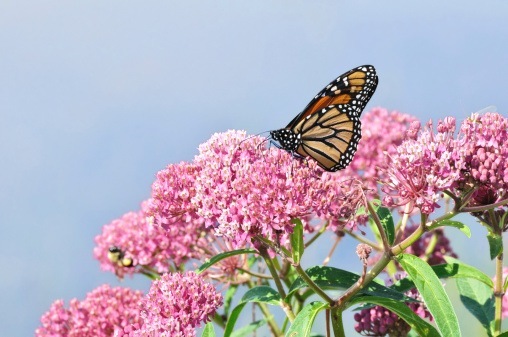 Bee Balm
Bee Balm
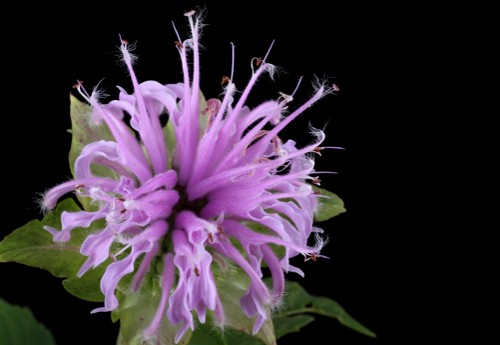 A perennial flowering herb indigenous to North America, bee balm (Monarda fistulosa) attracts bees, butterflies, and hummingbirds. You can choose one from different bee balm varieties to complement your flower garden. Available in shades of pink, scarlet red, and purple, flowers are borne in the tip of long stalks. In addition to regular watering, make sure you deadhead the spent blooms to extend the flowering period.
Butterfly Bush
As the name reveals, this hardy shrub is an excellent plant for butterfly gardening. Growing butterfly bush is so simple that many hobbyists consider butterfly bush an invasive species. The fragrant, bright-colored flowers are developed in clusters, which measure about 1 - 2 feet in length. They secrete nectar in large amounts to attract several types of butterflies, bees, and hummingbirds, all of which help in pollination.
A perennial flowering herb indigenous to North America, bee balm (Monarda fistulosa) attracts bees, butterflies, and hummingbirds. You can choose one from different bee balm varieties to complement your flower garden. Available in shades of pink, scarlet red, and purple, flowers are borne in the tip of long stalks. In addition to regular watering, make sure you deadhead the spent blooms to extend the flowering period.
Butterfly Bush
As the name reveals, this hardy shrub is an excellent plant for butterfly gardening. Growing butterfly bush is so simple that many hobbyists consider butterfly bush an invasive species. The fragrant, bright-colored flowers are developed in clusters, which measure about 1 - 2 feet in length. They secrete nectar in large amounts to attract several types of butterflies, bees, and hummingbirds, all of which help in pollination.
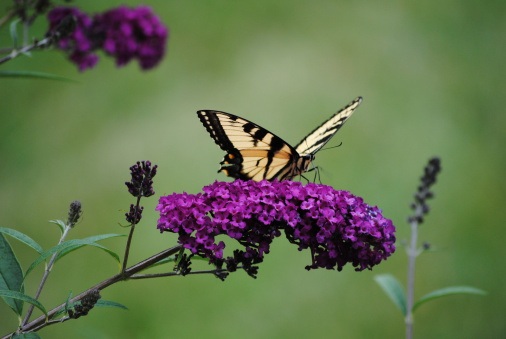 Purple Coneflower
Purple Coneflower
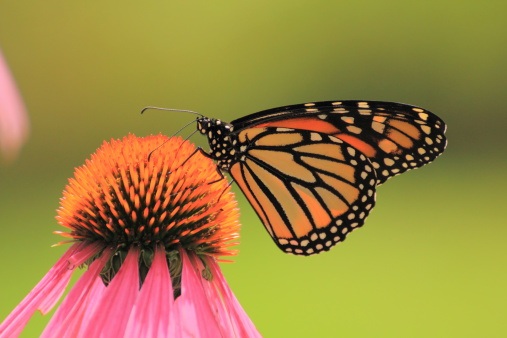 If you are not growing purple coneflower (Echinacea purpurea) in your garden, you are missing one of the most adorable flowers that invite larger butterflies. The conspicuous purple blooms having downward pointing petals look wonderful in any landscape. On top of this, butterflies sitting on the flower heads will make a priceless addition to the aesthetic value of your garden. It is native to United States, hence growing coneflower is easy.
Showy Sedum
A type of succulent plant, showy sedum or stonecrop (Hylotelephium spectabile) is low-maintenance, perennial flowering plant. In early winter, the pink flower buds develop in clusters, thereby inviting pearl crescent, American lady, and monarch butterfly. It can withstand prolonged dry spells and the thick foliage serves as a water reservoir for the plants. Once established, healthy growth of showy sedum is almost guaranteed with minimal care..
If you are not growing purple coneflower (Echinacea purpurea) in your garden, you are missing one of the most adorable flowers that invite larger butterflies. The conspicuous purple blooms having downward pointing petals look wonderful in any landscape. On top of this, butterflies sitting on the flower heads will make a priceless addition to the aesthetic value of your garden. It is native to United States, hence growing coneflower is easy.
Showy Sedum
A type of succulent plant, showy sedum or stonecrop (Hylotelephium spectabile) is low-maintenance, perennial flowering plant. In early winter, the pink flower buds develop in clusters, thereby inviting pearl crescent, American lady, and monarch butterfly. It can withstand prolonged dry spells and the thick foliage serves as a water reservoir for the plants. Once established, healthy growth of showy sedum is almost guaranteed with minimal care..
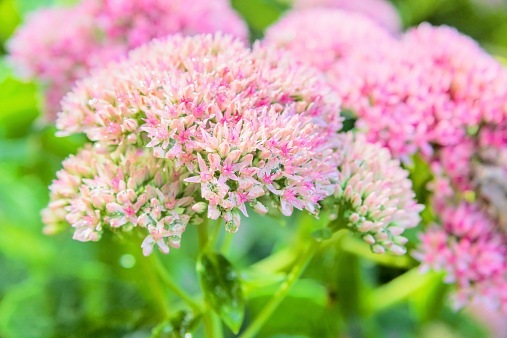 Tagetes
Tagetes
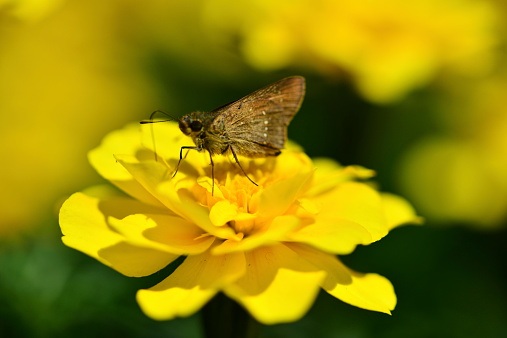 The yellow, orange, and red-colored marigolds are common flowers that attract specific kinds of butterflies. They belong to the genus Tagetes, and are remarkable for their hardiness to different growing conditions. The slightly pungent odor of marigolds attract American lady, ocola skipper, red admiral, and Hayhurst's scalloping butterflies. Based on garden layout, you can plant dwarf or regular marigold cultivar.
The yellow, orange, and red-colored marigolds are common flowers that attract specific kinds of butterflies. They belong to the genus Tagetes, and are remarkable for their hardiness to different growing conditions. The slightly pungent odor of marigolds attract American lady, ocola skipper, red admiral, and Hayhurst's scalloping butterflies. Based on garden layout, you can plant dwarf or regular marigold cultivar.
Copyright © www.100flowers.win Botanic Garden All Rights Reserved